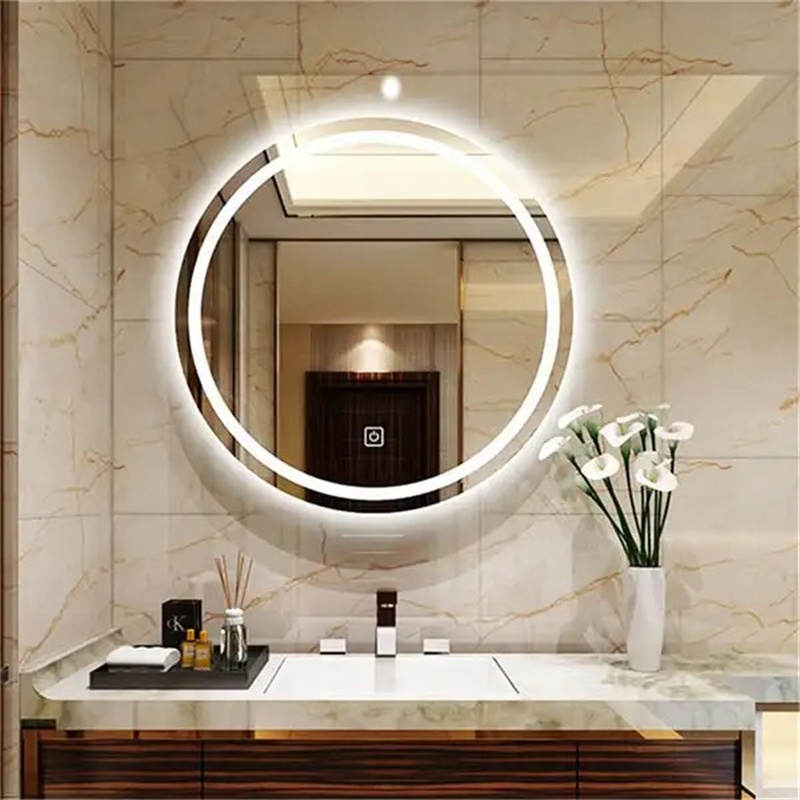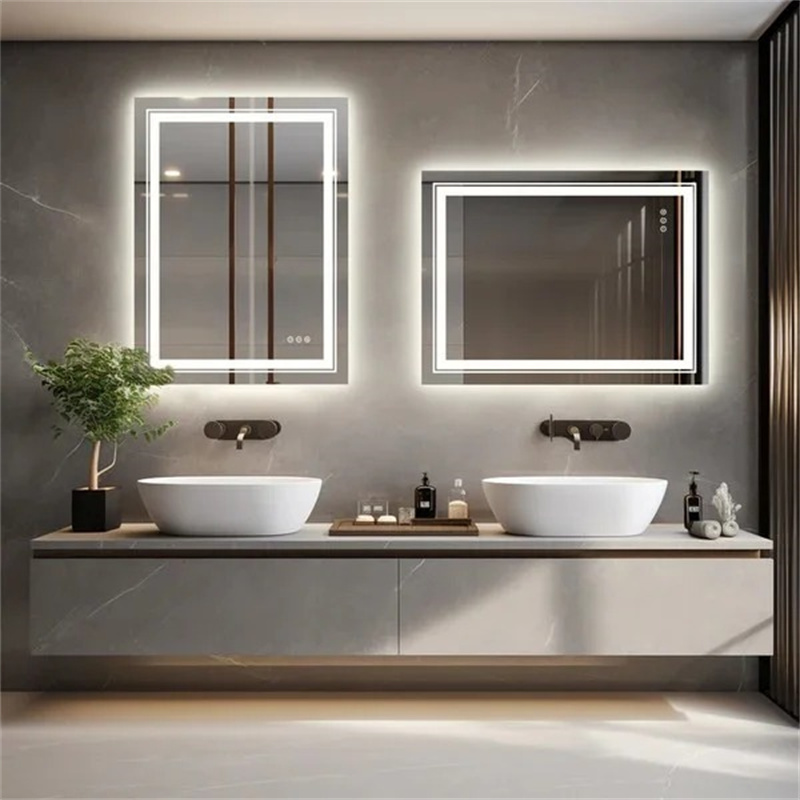In the realm of modern manufacturing, especially in the production of intelligent mirrors, the intelligent mirror sandblaster has emerged as a game – changing device. This article aims to provide a comprehensive understanding of this innovative equipment, covering its working principles, advantages, applications, and the impact it has on the intelligent mirror manufacturing industry.
Working Principles of Intelligent Mirror Sandblasters
Laser – based Sandblasting Mechanism
Most advanced intelligent mirror sandblasters utilize laser technology. The process begins with a high – energy laser beam being directed at the surface of the mirror. The intense heat from the laser rapidly heats the surface layer of the glass or mirror material. As a result, this layer quickly melts and vaporizes. By precisely controlling the power, duration, and movement of the laser beam, manufacturers can achieve the desired level of surface roughness or “sandblasted” effect.
For example, in the case of creating a frosted area on an intelligent mirror for touch – sensitive controls or decorative patterns, the laser beam is programmed to scan across the specified areas. The energy density of the laser is adjusted in such a way that it removes a thin layer of the mirror surface, leaving behind a smooth, frosted finish. This method allows for extremely accurate control over the depth and pattern of the sandblasted area, which is crucial for producing high – quality intelligent mirrors with intricate designs.
Mechanical Sandblasting Principles (in some traditional models)
Some intelligent mirror sandblasters may still rely on mechanical sandblasting principles, although they are less common compared to laser – based models. In mechanical sandblasting, a high – pressure stream of abrasive materials, such as sand or fine particles of silicon carbide, is directed onto the mirror surface. The force of the abrasive particles hitting the mirror surface gradually wears away the material, creating a rough or sandblasted texture.

The pressure of the air or other carrier gas used to propel the abrasive particles, as well as the type and size of the abrasive, can be adjusted to control the degree of sandblasting. However, compared to laser – based sandblasting, mechanical sandblasting may be less precise, especially when it comes to creating fine details or patterns on the intelligent mirror surface.
Advantages of Intelligent Mirror Sandblasters
High Precision
One of the most significant advantages of intelligent mirror sandblasters, particularly those using laser technology, is their high precision. They can achieve micron – level accuracy in controlling the depth and pattern of the sandblasted area. This level of precision is essential for manufacturing intelligent mirrors with touch – sensitive areas, where the exact location and size of the sandblasted regions need to be carefully defined to ensure proper functionality. For instance, a misaligned or unevenly sandblasted touch – sensitive area could lead to inaccurate touch responses in an intelligent mirror.
Time and Cost – Efficiency
Intelligent mirror sandblasters are designed to be highly efficient in terms of both time and cost. Laser – based sandblasters can complete the sandblasting process in a much shorter time compared to traditional methods. For example, traditional methods such as chemical etching or manual sanding can be extremely time – consuming, often requiring multiple steps and long processing times. In contrast, a well – designed laser sandblaster can finish the sandblasting of a large – sized intelligent mirror in a matter of minutes.

This increased efficiency also leads to cost savings. Fewer labor hours are required, and there is less waste of materials due to the high precision of the sandblasting process. Additionally, since laser – based sandblasters do not require the use of large amounts of chemicals or continuous replacement of abrasive materials (as in mechanical sandblasting), the overall production costs are significantly reduced.
Versatility in Design
These sandblasters offer great versatility in terms of design. They can create a wide variety of patterns, from simple geometric shapes to complex, customized designs on the intelligent mirror surface. This versatility allows manufacturers to meet the diverse aesthetic and functional requirements of their customers. For example, an intelligent mirror for a modern – style bathroom might feature a sleek, minimalist sandblasted pattern, while a mirror for a luxury hotel lobby could have an elaborate, decorative design. The ability to easily change the design parameters through software programming in laser – based sandblasters makes it possible to quickly adapt to different customer demands.
Environmentally Friendly
Compared to some traditional glass and mirror processing methods, intelligent mirror sandblasters are more environmentally friendly. Laser – based sandblasting does not produce harmful chemical waste, as is the case with chemical etching processes that use acids or other toxic substances. Mechanical sandblasting, although it may not involve chemicals, can produce a significant amount of dust, which can be a health hazard and may require additional dust – collection systems. In contrast, laser – based sandblasting generates very little waste, and the process is relatively clean, making it a more sustainable option for the manufacturing industry.
Applications of Intelligent Mirror Sandblasters
Manufacturing of Intelligent Bathroom Mirrors
Intelligent bathroom mirrors are one of the most common applications of intelligent mirror sandblasters. These mirrors often feature anti – fog properties, which are achieved through sandblasting a thin layer on the back of the mirror to create a rough surface that diffuses heat more evenly. The sandblasted areas can also be used to integrate touch – sensitive controls for functions such as adjusting the mirror’s brightness, turning on the anti – fog feature, or even connecting to a smart home system. The high precision of intelligent mirror sandblasters ensures that these functional areas are accurately created, providing a seamless user experience.
Production of Smart Home Mirrors with Display Features
Many modern smart home mirrors are equipped with display screens that can show information such as the time, weather, news, or even play videos. Intelligent mirror sandblasters are used to create the necessary patterns and textures on the mirror surface to enhance the visual appearance and functionality. For example, the sandblasted areas can be used to hide the edges of the display screen, making it blend in more seamlessly with the mirror surface when not in use. Additionally, sandblasted patterns can be used to create a unique aesthetic look for the mirror, adding to the overall decor of the smart home environment.

Industrial and Commercial Mirror Applications
In industrial and commercial settings, intelligent mirror sandblasters are used to produce mirrors for various purposes. For example, in the automotive industry, mirrors with special sandblasted coatings may be used for rear – view mirrors or interior mirrors to reduce glare and improve visibility. In commercial buildings, intelligent mirrors with sandblasted patterns can be used for decorative purposes in lobbies, restaurants, or retail stores. The durability and precision of the sandblasted finish provided by intelligent mirror sandblasters make these mirrors suitable for high – traffic and demanding environments.
The Future of Intelligent Mirror Sandblasters
As technology continues to advance, intelligent mirror sandblasters are likely to become even more sophisticated. We can expect to see improvements in laser technology, leading to even higher precision and faster processing speeds. Additionally, the integration of artificial intelligence and machine learning into sandblaster control systems may allow for more autonomous operation and better adaptability to different mirror materials and design requirements.
Moreover, as the demand for intelligent mirrors continues to grow in the global market, driven by the increasing popularity of smart homes and the need for more functional and aesthetically pleasing mirror products, intelligent mirror sandblasters will play an increasingly important role in the manufacturing process. Manufacturers will continue to invest in research and development to further optimize the performance and capabilities of these sandblasters, ensuring that they can meet the evolving needs of the industry.
In conclusion, intelligent mirror sandblasters have revolutionized the way intelligent mirrors are manufactured. Their high precision, efficiency, versatility, and environmental friendliness make them an essential tool in the modern mirror manufacturing industry. As technology progresses, these sandblasters are set to become even more advanced, opening up new possibilities for the design and production of intelligent mirrors.



